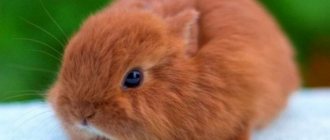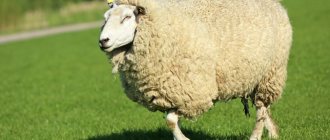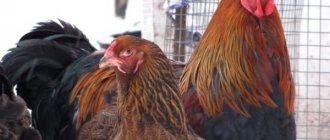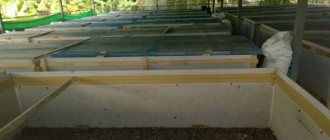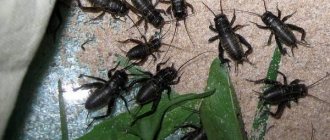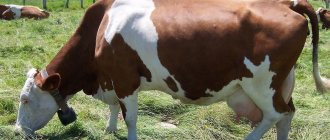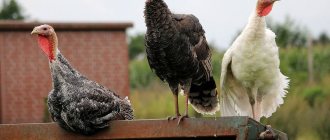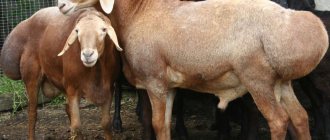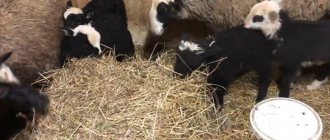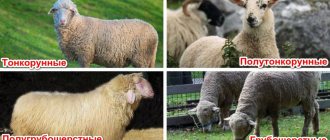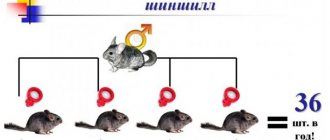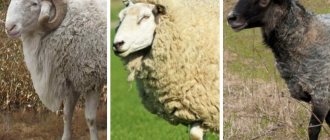The Merino sheep is the most common breed in Australia. The merino species here account for about 80% of all sheep varieties. All over the world, the wool of representatives of this breed is in great demand for its qualities. Products made from such wool are light and at the same time warm.
Origin story
Mentions of this breed can be found in historical sources from the 12th century. The largest number of sheep was in Spain; sheep farmers here worked hard to develop suitable breeds. For crossbreeding, they took sheep imported from North Africa and Asia Minor. Throughout this period, Spain supplied all European countries with wool. And after all the Arabs were expelled from the peninsula, the Spaniards single-handedly distributed wool in huge quantities.
The result of the bred breed was magnificent and exceeded all expectations so much that it was even forbidden to export sheep from the country. However, smugglers ignored any prohibitions and exported Merinos to other countries for profit. Such an initiative was punishable by death; the ban was in effect until the 18th century.
After this, breeding was actively carried out in other countries, for example, in Sweden and Saxony. This breed came to Australia at the end of the 18th century. To this day, work to improve the performance of the breed does not stop; selection and breeding work is carried out constantly.
The active breeding of Merinos in Australia is due to the fact that sheep farmers have appreciated all the advantages of this breed. Thanks to this breed, Australia managed to become one of the world's largest producers of fine wool. There is also a large population of these sheep here, although they are now bred in almost every country.
Important! Merinos do not exist in their pure form, since in each country they were crossed with local breeds and given new qualities to the species. For example, in South Africa, emphasis was placed on increasing meat productivity.
Organization and technology of sheep farming in Australia
In a number of sectors, Australian agriculture continues to occupy a leading position in the world and attracts the interest of specialists from many countries.
This primarily applies to sheep farming. As is known, it was formed on the basis of animals previously exported from Great Britain, Spain, Germany, France, and in a relatively short period of time it was far ahead of all these and other countries of the world, both in terms of the number of sheep and the quality of sheep products, especially wool. . In Australia, a large group of outstanding sheep breeders has formed, who have created not only the world-famous Australian Merino sheep, unsurpassed in wool productivity, and especially in wool quality, but also a highly effective intensive pasture technology of sheep breeding, allowing one worker to serve from 5 to 10 thousand animals. Sheep farming in Australia is concentrated mainly in three zones: pastoral, grain and sheep farming and high rainfall zones. The largest farms are located in the pasture zone, where each farm has an average of 5.6 thousand sheep. The industry is based on year-round grazing of animals.
In arid and semi-arid zones, groundwater and artesian water are used in most cases for watering and irrigating land. Irrigation is carried out by flooding or sprinkling. Farms with a large supply of water use estuary irrigation, which requires significantly less labor than other irrigation methods. However, all these measures do not always guarantee protection from the destructive effects of drought. Therefore, in recent years, farmers have been trying to create insurance reserves of feed - hay and concentrates. Hay is harvested in favorable years. It is pressed and stored directly on the pasture or under a canopy near the farmstead. Concentrates are also stored here in special metal containers, which facilitates their delivery to the place of feeding to animals. Sometimes, with the help of special machines, the hay from the windrows is rolled into dense rolls, which are often also left in the pasture. To feed the sheep, hay is scattered over the pasture. Concentrated feed is poured into special self-feeders designed to be used for several days, and placed on pastures.
Favorable climatic conditions make it possible to keep sheep outdoors all year round. On farms, buildings are built for shearing and veterinary treatments, for keeping sheep intended for exhibitions and auctions. All this makes it possible to obtain sheep products at relatively low costs for maintaining animals. It is important to note that in Australia all sheep are kept on fenced pastures, which also contributes to high incomes at minimal cost.
In an area with high precipitation (500 mm or more) and high grass yields, the load per 1 hectare of perennial cultivated pastures is 8-10 sheep. In arid zones with low grass yields, 2-4 hectares of pasture are allocated per sheep, and in semi-desert zones - 8-10 hectares of pasture.
In recent decades, the experience of organizing large feedlots - for 20 thousand sheep or more - has spread in Australia. Large companies purchase cull sheep and crossbred young animals from farmers and fatten them to the required weight and condition. The sites are divided into pens equipped with canopies and feeding troughs. For fattening, feed mixtures of hay cuttings and grain are used.
The organization of watering for sheep is of great interest. Artesian wells, mine wells, and, less commonly, drainage trenches are used as water sources. For boreholes and wells, reinforced concrete or metal tanks are installed on hills in such a way that water flows through pipes by gravity into watering troughs located in the pasture. Water enters the tanks from water sources using electric motors with an automatic switch and switch. If there are no water sources in the pasture, then water is delivered in large tank trucks. Water troughs, consisting of concrete gutters, are equipped with float devices, with the help of which the flow and level of water are regulated. With year-round pasture keeping in fenced cages, caring for animals comes down to monitoring them and carrying out various preventive treatments on the livestock. Specially trained dogs provide great assistance to farmers in working with sheep.
Natural mating is used in Australia
sheep, and at some breeding farms - artificial insemination. Mating of queens and queens is carried out in the summer (January-February). Stud rams have special markers placed on their chests, with the help of which a mark is applied to the uterus' rump during mounting. The farmer records the numbers of the queens mated to one or another ram. Lambing of the queens takes place in June-July, on an open-air pasture.
During the first 6 weeks after birth, sheep farmers inspect lambs daily. At 6 weeks of age, lambs are placed in a temporary pen. Here they have their ears tagged, mulesed and their tail removed.
.
Mulization is the removal of skin folds on the thighs under the tail. As a result of such operations, an area of smooth skin is formed that is not overgrown with hair, which helps prevent the deposition of eggs by blowflies. For the same purpose, contaminated areas in the area of the thighs and near the tail are trimmed. At the age of 9 months. The rams are graded and all animals unfit for breeding are castrated. At the same time, the sheep are divided into 2 groups: a group of replacement sheep and for sale.
At the age of 13 months. The rams are graded again, the best (5%) are allocated to the repair group.
In Australia, merino sheep are usually shorn once a year, young animals - 2 times, at the age of 3-4 and 13-14 months, breeding rams - in March and September. It is believed that with double shearing, the condition of breeding rams improves significantly, they tolerate heat more easily, and their fleece becomes less contaminated.
Early shearing of lambs is done not only to increase wool production, but also to give better structure to the fleece for subsequent shearing. When shearing once at one year of age, coarsened hair is often retained in the fleece, resulting in a reduction in the price of wool. Early shearing ensures that young animals are assessed for their coat quality, since by the time of grading all animals have the same period of coat growth.
Sheep are sheared in special rooms with a wooden floor at a height of 1.5-2 m from the ground using electromechanical shearing machines. Usually shearers, wool classers and other workers are united into a team and work in this composition for a long time.
Australian shearers are known for their highly efficient methods of restraining and shearing sheep. The approximate norm for one shearer is 90 sheep per day, some shearers shear an average of 120-130, and record holders shear 420-600 sheep per day.
In Australia, research is underway to make shearing easier and to find new ways to obtain wool. Four directions have been outlined: modernization of the equipment used and techniques for shearing sheep, development of an automatic robot for automatic shearing of sheep, chemical de-hairing of sheep, development of laser equipment for shearing sheep.
After removing the fleece from the sheep, it goes to the first classification table, on which 1-2 workers carefully straighten it, separate the dirty edges and re-shear (if any). The fleece is then transferred to the second classifying table, where the responsible wool classer works. The classification table is also a scale. When classifying wool, the classer takes into account many indicators. However, the main attention is paid to the diameter of the wool fibers, the evenness and condition of the fleece.
Thus, in Australian sheep farming, the country's natural and climatic conditions favorable for sheep breeding are rationally used, using year-round grazing of sheep in fenced areas with mandatory consideration of productivity during grazing. Sheep breeding is characterized by a high level of selection and breeding work, taking into account breeding animals with a systematic assessment of their productivity and culling of low-productive animals. The breed composition of sheep has a significant impact on productivity. The level of organization of the haircut ensures both high productivity and quality. The development of sheep breeding is facilitated by extensive research conducted in scientific institutions serving the industry.
Reasons for the popularity of the breed
Merinos have become popular in Australia and many other countries because of their undeniable advantages:
- Unpretentiousness in maintenance and adaptability to new conditions, rapid acclimatization in a new place. Tolerance to different weather conditions. Merino sheep do not require any special diet; they calmly eat regular food.
- The wool is delicate and thin, but at the same time warm. No other breed of sheep has a similar quality of wool.
- Excellent meat in terms of taste, so the content of merino sheep yields double benefits.
- Reproductive capacity of Merino sheep. Their females can give birth to up to 4 lambs at a time, despite the fact that lambing occurs only once a year. In addition, the survival rate of young animals is almost 100%.
Disadvantages of the breed
Merinos have no disadvantages. Only not very good features that are inherent in most wool breeds stand out:
- Frequent infestation by insects that parasitize thick fur. Keeping Merino sheep requires constant control of such parasites.
- Intolerance to dampness. Rain or snow causes irreparable damage to thick fur. In addition, animals often develop various diseases from such precipitation. Therefore, Merino sheep need to be protected from high humidity both outdoors and indoors.
Advantages and disadvantages
Since the times of medieval Spain and up to the present day, Merino sheep have remained one of the best, if not the best breed of wool.
Moreover, their key characteristic is not even the quantity of wool sheared, but its quality.
It is not surprising that in all countries where sheep breeding is more or less well developed, there is a local breed bred on the basis of Merino sheep.
The main advantages of these sheep are:
- Minimum requirements for conditions of detention. Merino sheep, especially Soviet Merino sheep, adapt well to any weather and climate conditions and can be kept outside all year round. All they need is a simple canopy that will protect them from the rain, as well as warm bedding.
- Minimum feed costs. In the summer, sheep can freely make do only with what they themselves find in the pasture. Only in winter will they have to be fed with pre-prepared food. But even in this situation, the cheapest feed is used - hay and oats.
- Wool quality. Merinos produce very high-quality fine wool, which textile industry enterprises willingly buy for big money. The wool of these sheep has ensured Australia's dominant position in the modern global sheep wool market.
The disadvantages that Merino sheep have are typical for all wool sheep in general, and not just for this breed:
- Vulnerability to parasites. Thick, dense fleece, if not properly cared for, very quickly becomes a breeding ground for various insects that parasitize the animal. Anyone who intends to seriously engage in breeding Merino sheep will have to wage a constant battle against parasites.
- Intolerance to dampness. When it rains, the fleece very quickly becomes saturated with water, which also carries the threat of parasites and other diseases in sheep. In addition, sheep, in principle, do not tolerate life in conditions of constantly high humidity.
Description of the breed
The main characteristics of such sheep:
- Massive build, there are folds of skin on the muzzle in the nose area.
- Males have large horns and are distinguished from females by a large fold of leather on the neck.
- A distinctive feature is the thick fur; it covers the entire body of the animal, only the muzzle and legs below the knee remain visible.
These are characteristics common to all varieties of Merino. There are also qualities that only representatives of a certain species possess:
- Australian merino wool produces the maximum amount of wool. The ancestors of this variety were brought from Spain.
- Electoral is also a variety bred in Spain, but it has taken root in Germany. Wool productivity is slightly lower than that of the previous variety. An adult produces only up to 1 kg of fleece, since sheep have a short pile, not even exceeding 4 cm.
- Negretti. These sheep were bred in Germany, they have a good wool yield - up to 4 kg per individual. Negretti differs from other Merinos in the smallest number of skin folds.
- Mazaevskaya sheep. This is a variety developed in Russia. It is most widespread in the north of the Caucasus region. You can get 6-15 kg of wool per year from one sheep, but recently problems have begun with the breed: genetic deterioration has begun to be noted. Because of this, lambs are often born weak, making keeping them economically unprofitable.
- The New Caucasian variety is the result of crossing Ramboulier and Mazaevsky sheep. These are powerful animals and have excellent performance indicators. Up to 6 kg of wool is sheared from a sheep per year, and up to 9 kg from a ram.
- Rambouillet is a variety of Merino that has undergone a transformation in France. The average wool clipping rate is up to 5 kg per year.
- Soviet merino was bred in the USSR by crossing Ramboulier and New Caucasian. These individuals not only produce excellent beige wool, but also a lot of meat.
- Askan merino is the work of Ukrainian breeders. The animals are distinguished by their massive physique and excellent muscles. An adult ram weighs up to 120 kg, a female - up to 60 kg. Sheep produce beige or white wool. If you provide a high-quality diet, you can get a lot of meat at the same time.
Sheep wool
Wool is the main product obtained from representatives of this breed. Merino fleece is valued in the market for its softness, delicacy and thermal qualities. The entire coat is shorn. After processing, the fiber acquires a minimum thickness - less than that of human hair.
Important! Treated wool does not absorb moisture, warms well and is highly durable.
Merino fleece has its own characteristics:
- Softness, which is not inherent in every wool, as well as the ability to retain heat for a long time.
- Clothes made from such wool are valued for their comfort in all weather conditions.
- Merino wool contains a natural component, lanolin, which has an antibacterial effect.
- Often, fleece is naturally white in color, which makes coloring much easier. This type of wool can easily be given any shade.
- Merino wool produces three times more fabric than the fleece of any other breed of sheep.
- Wool fabric does not absorb sweat and always smells good.
Merino wool is one of the elite types of yarn; it has many advantages.
Prospects for breeding in Russia
If we do not take into account certain regions of the Russian Federation, where lamb is the traditional food of the local population, in the whole country the food market has little interest in meat products of this type.
However, from the very beginning, Merino sheep were oriented not at food products, but at obtaining raw materials for the textile industry.
And these products are in quite high demand, since products made from merino sheep wool have a top level of quality. In addition, sheep wool, especially of high quality, is in considerable demand on the international market.
Thus, in terms of demand for products, Merino sheep are definitely of interest to domestic livestock farmers. The only question that remains is the organization of a sheep farm.
Taking into account the fact that sheep need pastures, their breeding will only be promising where there is an abundance of these pastures. But purchasing expensive land for these purposes in densely populated regions will be unprofitable.
It is important to understand that breeding sheep for wool only makes sense when the minimum required number of livestock is reached.
It makes no sense to keep two or three sheep on a farm, even for the sake of valuable merino wool. Economic feasibility begins to appear only with several dozen or even hundreds of heads.
Taking into account the above, the conclusion suggests itself that it makes sense to breed merino sheep only in the conditions of a farm or other agricultural enterprise. But raising these sheep on a private farmstead is futile.
Well, as for the specific breed that should be preferred, it all comes down to availability.
In Russia, it is easiest to purchase Soviet merino sheep, as well as the Azerbaijani mountain merino sheep breed. Our other varieties are too few in number, and therefore purchasing breeding stock will present certain difficulties.
Types of Australian Merinos
Let's look at the varieties of this breed:
- Fine - this variety is best bred in areas that are not too hot; places with high humidity are also suitable. On the neck of such merino there are no folds of skin, it is even. The fur is distributed evenly throughout the body. It is thin - up to 15 microns, hence the increased demand and their cost. Males are not large in size, with an average weight of 70 kg.
- Medium. These animals are larger, their average weight reaches 85 kg. The variety is recommended for breeding in forest-steppe zones. The thickness of the hairs is 15-23 microns. Such individuals have few skin folds.
- Strong are large representatives of merino sheep in Australia, weighing up to 95 kg. They are used for both wool and meat. Fiber thickness is up to 24 microns.
Sheep farming in Australia.
Merino sheep were first introduced into this country in 1789 from South Africa. This was followed by other imports, most of them from Saxony (Germany). Here the sheep quickly took root, because... The natural conditions of Australia turned out to be very favorable for them.
Throughout the 20th century. Australia ranked first in the world in terms of sheep population. In 1990, their number was 170.3 million. There were 10 sheep per capita. However, at the beginning of the 21st century. the herd dropped to 110.9 million, allowing China to overtake Australia.
The main sheep-raising areas in Australia are divided into three types (Fig. 52). They occupy the territory of the eastern, most populated, part of the country and, in a somewhat reduced form, in its western part.
For areas of the first type
Characterized by specialization in intensive pasture sheep breeding for meat and wool. It developed based on those mastered at the beginning of the 19th century. coastal lowlands of the South-East and South-West, where annual precipitation exceeds 500 mm. Throughout the 19th century. these areas developed as purely sheep-raising areas, focused on the export of wool and meat. In the 20th century This type of farming was transformed into a more intensive one - with the sowing of fodder crops and fattening sheep for meat. Sheep farming here is combined with cattle breeding.
Content
Successful breeding of Merino sheep is possible only if certain rules are followed:
- The basis of the diet of any variety of merino sheep is fresh and juicy grass. Therefore, it is necessary to provide such animals with pasture. As soon as the grass grows to 8 cm in the spring, the sheep should be sent out to pasture. Animals can be released into the meadows when the dew has disappeared from the grass. Sometimes the morning coolness and dampness from dew cause animals to catch colds.
- During the summer, sheep should be driven under a shelter at night and during the hottest hours of the day so they can rest in the shade. Sheep must be in the pasture until 22:00.
- In autumn, grazing time begins to be gradually reduced, reaching 4 hours a day. For this period of the year, the best grazing hours are from 11-13 pm to 15-17 pm.
- In summer there are many different insects in the grass, so repellents are used to protect the animals.
- In wet weather, it is necessary to pay attention to the prevention of foot rot. To do this, animals' hooves must be inspected periodically.
For proper care, you must follow these recommendations from farmers:
- It is necessary to regularly vaccinate livestock - this will protect livestock from epidemics.
- The basis of the diet of any variety of merino sheep is plant food. In winter, you can include root vegetables and vegetables in your diet. Potatoes, carrots and beets are good. Also in winter, ewes need to be given vitamin and mineral supplements.
- Even in winter, Merino sheep can be kept outside, moving into a closed pen only during periods of severe frost. It is necessary to shelter sheep from snowfall so that their thick wool does not get wet. This can quickly lead to parasites.
- When grazing, sheep find their own food. Herbs such as alfalfa, clover, wheatgrass, wormwood and others are good for them. Even staying on poor pastures is preferable for merino sheep to being kept in a cramped pen. Outdoor exposure minimizes the risk of parasite infection.
- When setting up a pen for merino sheep, you need to follow some rules: it must be dry, warm and ventilated.
- Regular bathing of sheep in special baths prevents wool from matting. Veterinarian examinations are also necessary.
- In winter, in the pen, sheep are fed hay and straw - this is the basis of winter nutrition. If you feed barley, sheep quickly develop obesity and, therefore, productivity decreases. It is better to give bran and bean flour.
Features of keeping and caring for Australian Merino
Australian Merino is characterized by its endurance. This animal is capable of making long journeys when searching for suitable pasture. However, keeping it is not the easiest thing compared to keeping other breeds.
Basic rules for keeping merino sheep:
- The sheepfold should be warm, dry, and able to protect from drafts.
- Be sure to regularly ventilate the room and have fresh water.
- In the spring, sheep should be turned out for grazing no earlier than the end of April, when the night dew has time to dry by morning, since humidity is detrimental to the delicate merino wool.
- Walking animals in winter should be sufficient.
- Wool needs regular bathing with disinfectants to prevent matting and deterioration. To bathe, you need to fill a prepared hole of sufficient depth with water and disinfectant and drive the flock through it.
- Sheep's hooves require special attention: they need to be cleaned 4-5 times annually.
- High-quality food is the key to the health and productivity of this breed. Oats, barley, hay, root vegetables, and bran are suitable as food for Merinos.
- Be sure to give a vitamin complex, minerals and salt.
- Timely veterinary care.
The special structure of the jaw apparatus allows Merinos to cut plants to the very roots, as well as to graze on pasture after other livestock. Magnificent fleece has thermal insulation properties and perfectly protects animals both in winter frosts and in summer heat. However, this breed never took root in very hot regions. Sheep reach maturity and are ready to breed at 1 year of age. Pregnancy lasts 143-150 days.
It is preferable for lambs to appear in March-April, which should be taken into account before mating. Quite demanding to care for, Australian merino sheep will pay for the cost of care many times over after shearing.
Requirements for the shed
Even if the Merinos spend a minimum amount of time indoors, the place still needs to be properly arranged. Like any other sheep, Merinos do not tolerate drafts and dampness. This means you need to pay attention to sealing the room and creating ventilation.
The comfortable temperature for them is from +8 to +12 degrees. If it is stuffy, this is also dangerous for the sheep. In the rooms where ewes and cubs are kept, it should be a little warmer - about +15 degrees.
In the walking yard near the shed you need to equip feeders and drinking bowls (access to water must be constant). It is important to avoid crowding in the shed. For one adult animal, 1.5-2 m2 of space is required, for a lamb - about 0.7 m2. If a sheep is kept with its young, they need about 2.2-2.5 m2.
Haircut and bathing
During the first year of life, Merinos are not cut; the first cut is possible only from the beginning of the second year. This is done once a year - in the spring. Before shearing, it is necessary to inspect the sheep to ensure that the wool is dry and clean. Sheep are usually sheared together. One person holds the animal, the other cuts the animal. During the procedure, the entire fleece is removed without missing a single section.
Throughout the life of Merinos, as well as before shearing (if the wool is dirty), bathing is recommended. But there are cases when swimming will be mandatory:
- The period when 2-3 weeks have passed since the haircut.
- When the lambs are separated from their mother, she must be bathed.
- In extreme summer heat, animals are washed more often; the need for this is determined by the degree of contamination of the sheep.
Pits with water can be used for bathing; the herd is driven through them. The depth of the holes should be such that the water level in them reaches the neck of a low sheep. You can bathe sheep in large containers of water. But even washing with a hose will be effective.
Shearing
Sheep trimming is an iconic activity in rural areas. In the early days of the wool industry in the early 19th century, they were cut with shears similar to pruning shears. According to surviving reports, the leading master was Tom Merley, who sheared 30 animals daily in 1835. The record was broken in 1892 by Jack Howe, who managed to shear 321 sheep in Queensland in a day.
The development of industry also brought the need to introduce mechanization in order to reduce processing time and increase labor efficiency. Specialized scissors began to be produced in the sixties of the 19th century, and in 1882 Jack Gray became the first person to do the job using mechanical scissors. Later, a cattleman from Ireland came up with a device that connected to the engine. The working surface of the device made it possible to relieve the strain on the hands and made it possible to trim the hair much closer to the animal’s skin. But, like all innovations, it was received with hostility. Thousands of specialists feared that the new effective method would leave them without work. Powerful trade unions were formed, prohibiting members from cutting hair with the new invention. The six-month strike threatened the industry in the eastern states. This event laid the foundation for the development of the labor movement. Progress cannot be stopped, and at the beginning of the twentieth century, Dan Cooper sheared 325 sheep per day with a clipper. At the beginning of the 21st century, progress reached the point of being able to produce a record amount of raw materials using a subcutaneous injection, which destroys the hair on the skin. Despite these advances, shearing is still the most common form of processing and hand shearing is still an iconic profession and part of Australian cultural heritage.
Reproduction
Mating is possible when both the female and the male have already reached their second year of life. To do this, you can simply put them in a separate enclosure for 2 days. This is often enough for fertilization. If there is no pregnancy, then the procedure is repeated after 2 weeks.
Pregnancy in female Merino sheep lasts 20-22 weeks. Most often, childbirth occurs on its own; sometimes assistance is required. A person needs to rupture the amniotic sac and help the lamb get out. Newborn lambs are viable; already 20 minutes after lambing they stand on their feet and try to drink their mother’s milk.
Over the next 3 months, the lamb is kept near its mother and its main food is milk. But from 1 month onwards, babies are given complementary foods. For example, cereals, hay or grass, as well as mixed feed are suitable.
